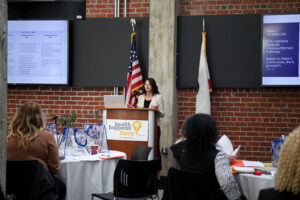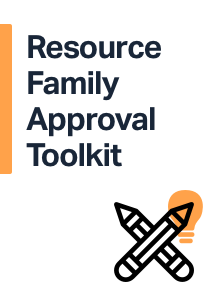Budget cuts in the past few years have poked serious holes in our state’s safety net programs supporting foster children. But, after years of cuts, California is now recovering from the recession and looks forward to a surplus in the coming year. Recognizing the need to balance both ensure stability and expand opportunities, the Assembly Democratic Caucus released the Blueprint for a Responsible Budget, which lays out 2014 priorities for the Democratic Caucus of the California State Assembly. One of the priorities is reducing child poverty. With 1/4 of our state’s children living in poverty (many of them in foster care), this is an important step in improving the health, well-being and education outcomes of the children the Alliance serves.
According to the Blueprint, nearly ¼ of California children (2.3 million) live in poverty, which is the highest rate of child poverty in the country. And, as the Blueprint notes, the draconian budget cuts that have been made to our state’s safety net programs over the course of the Great Recession have worsened child poverty and its consequences in California.
The California Senate is also focusing on reducing poverty and Senator Mark DeSauliner (D-7th) recently launched a the Ending Poverty and Inequality in California (EPIC) Caucus to reduce the number of people living in poverty and to increase economic opportunity for all Californians.
The Alliance is among the organizations that have joined the EPIC Caucus as a partner, and believes an important first step to reducing poverty – and especially child poverty – is to change California’s practice of placing our state’s foster children into deep poverty. In California, relatives are the preferred placement for children in foster care. This is for good reason. Placement with relative caregivers offers a family-like setting and can provide consistency and stability, preserving family connections and maintaining cultural customs. Further, children in kinship care have fewer placement changes and more frequent and consistent contact with birth parents and siblings.
Despite this legal preference for relative placement, when the child welfare agency finds a relative to care for a child in foster care, that child is provided just a fraction of the support that the exact same child would receive if placed in the home of a non-relative. Indeed, most of our state’s foster children who are living with relatives receive support equal to just 37% of the poverty line. That’s deep poverty. Growing up in deep poverty – particularly as a foster child – has major long-term implications for the health and well-being of these children.
It’s terrible when any child grows up in poverty – however it is unconscionable for a child to be placed into deep poverty by the very system charged with protecting him. We are encouraged by the leadership shown by California’s elected leaders to reduce child poverty and are hoping to see a stop to this inequitable practice in the coming year.
Read our policy paper on the link between foster children and poverty.








